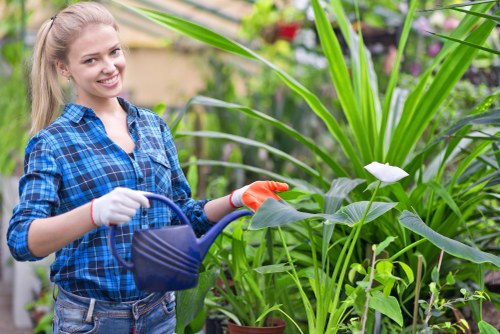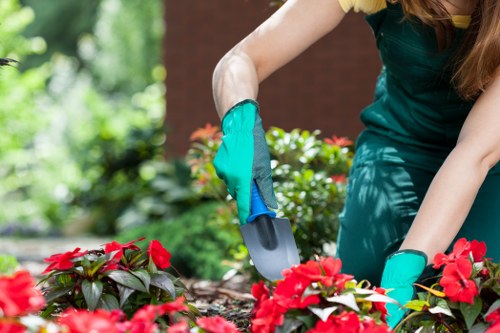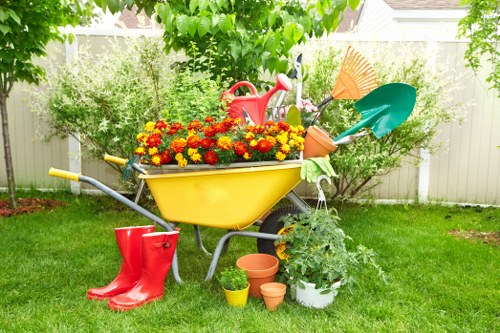Landscape Gardening in Lawn Mower

Landscape gardening is an art that harmoniously blends natural elements to create aesthetically pleasing outdoor spaces. Central to maintaining these landscapes is the role of the lawn mower, a tool that not only keeps your lawn tidy but also contributes significantly to the overall health and appearance of your garden.
Understanding the interplay between landscape gardening and lawn mowing is essential for creating a vibrant and sustainable garden. This article delves into the strategies, tools, and practices that optimize lawn care within your landscape, ensuring that your garden remains a beautiful and inviting space.
From selecting the right lawn mower to adopting best mowing practices, we'll explore how each aspect influences the health of your grass and the overall landscape design. Whether you're a seasoned gardener or a novice, mastering these techniques will enhance the beauty and functionality of your outdoor space.
Choosing the Right Lawn Mower for Your Landscape

Selecting the appropriate lawn mower is the first step in integrating effective lawn care into your landscape gardening routine. The type of mower you choose can impact the efficiency of your mowing sessions and the health of your lawn.
There are several types of lawn mowers available, each suited to different lawn sizes and terrain types. Understanding these options will help you make an informed decision that aligns with your garden's specific needs.
Manual Reel Mowers are ideal for small, flat lawns. They are environmentally friendly, requiring no fuel or electricity, and provide a clean cut that promotes healthy grass growth. However, they are labor-intensive and may not be suitable for larger or uneven terrains.
Electric vs. Gas-Powered Mowers

When deciding between electric and gas-powered mowers, consider factors such as lawn size, frequency of mowing, and environmental impact.
Electric mowers are quieter, produce no emissions, and are generally lighter and easier to maneuver. They are best suited for medium to small lawns and offer a low-maintenance option.
Gas-powered mowers, on the other hand, are powerful, capable of handling larger areas and tougher grass conditions. They are more suitable for extensive landscapes but require regular maintenance and emit fumes.
Techniques for Effective Lawn Mowing

Proper mowing techniques are crucial for maintaining a healthy and attractive lawn. Incorrect mowing can lead to a variety of issues, including uneven growth, weed proliferation, and increased susceptibility to pests and diseases.
Adhering to best practices ensures that your lawn remains robust and contributes positively to the overall landscape design.
- Maintain the Right Mowing Height: Different grass types thrive at specific heights. Maintaining the correct mowing height promotes deeper root growth and enhances lawn resilience.
- Regular Mowing: Consistency is key. Mowing regularly prevents overgrowth and helps maintain an even appearance.
- Sharp Blades: Ensure that mower blades are sharp to provide clean cuts, reducing stress on the grass.
Grasscycling for a Greener Lawn

Grasscycling, the practice of leaving grass clippings on the lawn after mowing, is an eco-friendly technique that benefits your garden in multiple ways.
Clippings decompose quickly, returning valuable nutrients to the soil and reducing the need for chemical fertilizers. This practice also helps retain soil moisture, improving overall lawn health.
Incorporating grasscycling into your lawn care routine supports sustainable gardening practices and contributes to a greener, healthier landscape.
Integrating Plants and Lawn Features with Mower Maintenance

Balancing lawn care with plant life is a fundamental aspect of landscape gardening. Proper mower maintenance plays a pivotal role in ensuring that both grass and plants thrive harmoniously.
Strategically placing plants and lawn features can enhance the aesthetic appeal and functionality of your garden. However, this requires careful planning to prevent damage during mowing and to promote healthy growth.
Strategic Plant Placement: Positioning plants away from mowing paths minimizes the risk of accidental damage and ensures that both grass and plants receive adequate sunlight and nutrients.
Maintaining Decorative Borders

Decorative borders add definition and structure to your landscape. Regular upkeep of these features is essential to maintain their shape and prevent encroachment by grass.
Using string trimmers or edging tools can help maintain clean lines and preserve the integrity of your garden's design. This attention to detail enhances the overall appearance and contributes to a well-organized outdoor space.
By integrating mower maintenance with plant care, you create a cohesive and balanced landscape that is both beautiful and easy to manage.
Sustainable Practices in Landscape Gardening with Lawn Mowing

Embracing sustainability in your lawn care practices not only benefits the environment but also promotes a healthier and more resilient garden.
Implementing eco-friendly mowing techniques and maintaining your mower reduces your carbon footprint and supports sustainable gardening initiatives.
- Energy-Efficient Equipment: Choose mowers that consume less energy or utilize renewable energy sources.
- Proper Maintenance: Regularly servicing your mower ensures optimal performance and extends its lifespan.
- Water Conservation: Combine mowing practices with efficient watering techniques to preserve water resources.
Composting Grass Clippings

Composting grass clippings is an excellent way to recycle nutrients back into your garden. This practice reduces waste and enriches the soil, fostering robust plant growth.
By integrating composting into your lawn care routine, you create a self-sustaining ecosystem that supports the health of your landscape.
Additionally, composting minimizes the need for chemical fertilizers, contributing to a more organic and sustainable gardening approach.
Common Mistakes to Avoid

Avoiding common mistakes in lawn mowing ensures that your gardening efforts yield the best possible results. Awareness of these pitfalls allows you to maintain a healthy and attractive lawn.
Identifying and correcting these errors can prevent long-term damage and enhance the overall health of your garden.
- Overcutting: Cutting too much grass at once stresses the lawn. Adhering to the one-third rule helps maintain lawn health.
- Neglecting Blade Maintenance: Dull blades tear grass, leading to ragged edges and increased susceptibility to diseases.
- Mowing Too Short: A short cut height can weaken the grass, making it less resilient to environmental stresses.
Ignoring Lawn Aeration

Lawn aeration is a vital practice that enhances soil health by allowing better air, water, and nutrient penetration. Neglecting this step can result in compacted soil and poor grass growth.
Incorporating aeration into your lawn care regimen promotes a thriving and vibrant landscape.
Tip: Aerate your lawn during the growing season for optimal results.
Conclusion

Landscape gardening, when combined with effective lawn mowing practices, creates a harmonious and sustainable outdoor environment. Selecting the right mower, adopting best practices, and incorporating sustainable techniques are key to maintaining a beautiful and healthy garden.
By understanding the nuances of landscape gardening in lawn mowing, you can achieve a garden that is not only visually appealing but also robust and easy to maintain.
Contact us today to learn more about optimizing your landscape gardening and lawn mowing practices. Let our experts help you create the garden of your dreams.